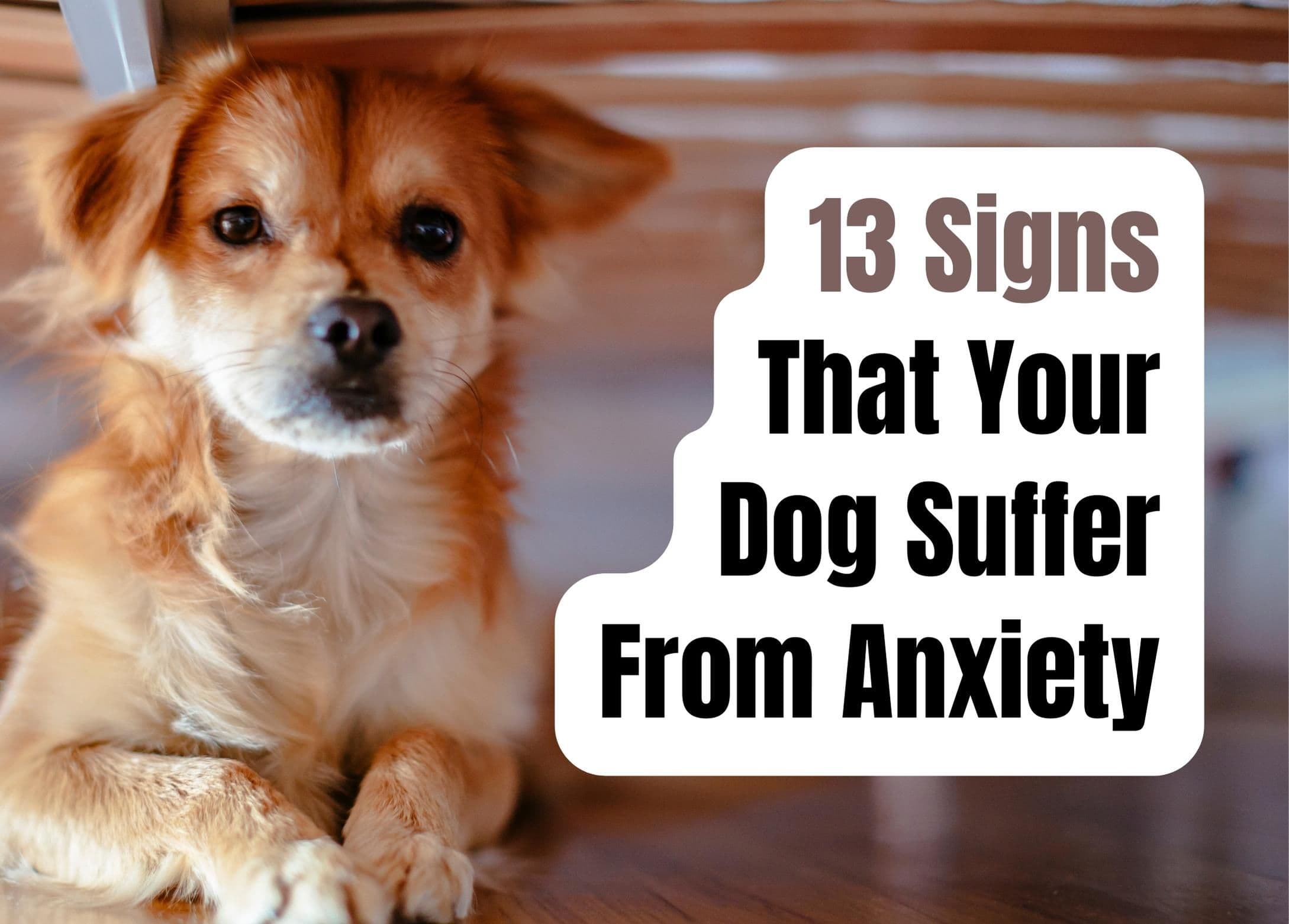How to Recognize and Alleviate Anxiety in Your Dog: 13 Key Signs

Dog anxiety is more common than you might think — and it doesn’t just show up as shivering in a thunderstorm. Over the years, we’ve seen it take many forms, from chewed-up furniture to pacing, hiding, or even aggression. If your dog’s behavior suddenly changes, anxiety might be the root cause.
Here’s how to spot the signs — and what’s worked for us in helping our dogs feel safe and calm.
Common Signs of Anxiety in Dogs
1. Excessive barking or whining
Sure, dogs bark to communicate — but if it feels constant or out of place, something’s up. Our Ridgeback used to whine every time we grabbed our keys. Turns out, it was separation anxiety. Identifying the trigger is step one. Bark collars and gadgets might work short-term, but we only recommend them after trying training — and always with guidance from a professional.
2. Destructive behavior (chewing, digging, etc.)
Chewed-up shoes? Dug-up backyard? That’s not just bad manners — it can be anxious energy looking for an outlet. Safe chew toys, puzzle feeders, and sandboxes for diggers can go a long way. Regular exercise and mental stimulation are key.
3. Aggression
Dogs don’t get aggressive “just because.” If your pup is growling, snapping, or biting unexpectedly, anxiety may be behind it. Rule out medical issues first, and then bring in a behaviorist if needed. We’ve worked with trainers who helped us decode what our dog was trying to tell us — and it made all the difference.
4. Restlessness and pacing
One of our fosters used to pace for hours, especially when we left the room. A mix of structured daily walks, interactive toys, and calming routines helped her settle. If pacing is constant, check for medical issues like pain or thyroid problems, too.
5. Loss of appetite
Skipping meals isn’t normal — especially for a dog who usually rushes the bowl. Anxiety can kill appetite, but so can dental pain or illness. Always start with a vet check.
6. Trembling, panting, or drooling
Physical signs like these often show up during fireworks or thunderstorms, but if your dog is shaking or panting without a clear reason, anxiety could be the culprit. Again, rule out health issues first.
7. Avoiding people or hiding
Some dogs just need space — but if yours suddenly starts retreating under the bed or avoiding contact, it’s worth looking into. New environments, past trauma, or sensory loss (like hearing or vision) can all play a role.
8. Loss of interest in favorite activities
When a dog who used to go wild for fetch suddenly ignores the ball, it’s a red flag. Changes at home, boredom, or anxiety can all dampen enthusiasm. Reintroduce play gently and keep routines consistent.
9. Accidents in the house
Even potty-trained dogs can regress if they’re anxious. Don’t scold — assess. Did something change in their routine? Are they afraid to go outside? Or could it be a UTI or other medical issue?
10. Dilated pupils or wide-eyed stares
We’ve seen this during vet visits, loud noises, or even just new experiences. If it’s frequent, though, it’s worth digging deeper.
11. Trouble sleeping
Just like us, anxious dogs can struggle with sleep. If your dog’s up all night pacing or shifting around, check for pain, anxiety, or even cognitive changes in older dogs.
12. Escape attempts
Dogs trying to bolt from the yard, crate, or even your arms may be feeling trapped or overwhelmed. Make sure they have a secure, calm space and plenty of enrichment to ease that urge.
How to Help Your Anxious Dog
We’ve tried a lot over the years, and here’s what’s consistently helped:
🎯 Positive reinforcement
Reward calm behavior. Praise. Treats. Gentle attention. It builds trust and helps your dog feel more in control.
🔁 Desensitization + counter-conditioning
Scared of the vacuum? Start from across the room with it off, reward calm behavior, and work up slowly. This takes time — but it works.
📅 Stick to a routine
Dogs love predictability. Feeding, walks, playtime — keep it consistent. It gives them something to rely on, especially during big life changes.
🏠 Create a safe space
Set up a quiet corner with a cozy bed, favorite toys, maybe a shirt that smells like you. It should be their retreat — not a punishment zone.
🌿 Try calming aids
We’ve used pheromone diffusers and calming sprays with success. They’re not magic fixes, but they can take the edge off. Always check with your vet first.
💊 Medication (when needed)
For more severe anxiety, your vet may suggest medication. It’s not a forever thing — just a tool to help your dog settle enough to benefit from training and other support.
Final Thoughts
Anxiety in dogs isn’t always obvious — and it’s not something they can “just get over.” But with patience, structure, and empathy, you can help your dog feel safe again.
If you’re unsure where to start, talk to your vet or a certified dog behaviorist. The sooner you act, the sooner your dog can get back to being the happy pup you know and love.
